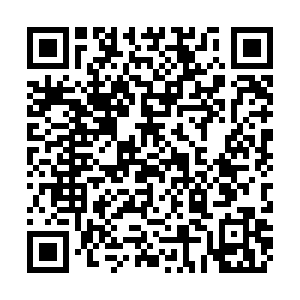Uncertainty and Monte Carlo Simulation
BEE 4750/5750
Environmental Systems Analysis, Fall 2022
Vivek Srikrishnan
September 7, 2022
Outline
- Questions?
- Coding Example
- Introduction to Monte Carlo
Coding Example: CRUD Simulation
Now, let's do some simulations with the CRUD example.
Go to https://github.com/BEE4750/class-exercises and clone (you may have already done this).
If you've already cloned, make sure it's up to date with a git pull –- I made some changes over the weekend.
Monte Carlo Methods
Last week, we used Monte Carlo estimation for frequencies of sums of multiple dice.
Monte Carlo Methods
Monte Carlo estimation involves:
- Sampling input(s) from probability distribution(s);
- Simulating the quantity of interest;
- Aggregating the results.

Monte Carlo Methods
In this case, we used Monte Carlo to estimate a very simple quantity (which we didn't need it for), but it's a very powerful category of methods.
Monte Carlo estimation is a very useful method for calculating complex and high-dimensional integrals, since an integral is an n-dimensional area:
- Sample uniformly from the domain;
- Compute how many samples are in the area of interest.
Monte Carlo (Formally)
We can formalize this common use of Monte Carlo estimation as the computation of the expected value of a random quantity Y:
μ=E[Y]
To do this, generate n independent and identically distributed values Y1,…,Yn. Then the sample estimate is
μ~=n1i=1∑nYi
Monte Carlo (Formally)
More generally, we want to compute some quantity Y=f(X), where X is distributed according to some probability distribution p(x) and f(x) is a real-valued function over a domain D.
Then μ=E(Y)=∫Df(x)p(x)dx.
But the method is more general even than that: X need not be continuous (like rolling dice).
And this isn't limited to scalars: so long as f(x) is sufficiently well-behaved, the law of large numbers ensures that Monte Carlo estimation will work.
The Large of Law Numbers
If
(1) Y is a random variable and its expectation exists and
(2) Y1,…,Yn are independently and identically distributed
Then by the weak law of large numbers:
n→∞limP(∣μ~n−μ∣≤ε)=1
The Large of Law Numbers
If
(1) Y is a random variable and its expectation exists and
(2) Y1,…,Yn are independently and identically distributed
Then by the weak law of large numbers:
n→∞limP(∣μ~n−μ∣≤ε)=1
In other words, eventually we will get within an arbitrary error of the true expectation. But how large is large enough?
Monte Carlo Sample Mean
Notice that the sample mean μ~n is itself a random variable.
With some assumptions (the mean of Y exists and Y has finite variance), the Monte Carlo sample mean E[μ~n] is
n1i=1∑nE[Yi]=n1nμ=μ
This means that the Monte Carlo estimate is an unbiased estimate of the mean.
Monte Carlo Sample Error
Next, we'd like to know more about the error of this estimate for a given sample size.
The variance of this estimator is
σ~n2=Var(μ~n)=E((μ~n−μ)2)=nσY2
So as n increases, the standard error decreases:
σ~n=nσY
Monte Carlo Sample Error
In other words, if we want to decrease the Monte Carlo error by 10x, we need 100x additional samples. This is not an ideal method for high levels of accuracy.
Monte Carlo is an extremely bad method. It should only be used when all alternative methods are worse.
– Sokal, Monte Carlo Methods in Statistical Mechanics, 1996
Monte Carlo Sample Error
In other words, if we want to decrease the Monte Carlo error by 10x, we need 100x additional samples. This is not an ideal method for high levels of accuracy.
Monte Carlo is an extremely bad method. It should only be used when all alternative methods are worse.
– Sokal, Monte Carlo Methods in Statistical Mechanics, 1996
The thing is, though –- for a lot of problems, all alternative methods are worse!
Poll
When might we want to use Monte Carlo?
URL: https://pollev.com/vsrikrish
Text: VSRIKRISH to 22333, then message

When To Use Monte Carlo?
Converging at a rate of 1/n is not great. But:
When To Use Monte Carlo?
Converging at a rate of 1/n is not great. But:
- All models are wrong, and so there always exists some irreducible model error. Can we reduce the Monte Carlo error enough so it's less than the model error and other uncertainties?
When To Use Monte Carlo?
Converging at a rate of 1/n is not great. But:
- All models are wrong, and so there always exists some irreducible model error. Can we reduce the Monte Carlo error enough so it's less than the model error and other uncertainties?
- We often need a lot of simulations. Do we have enough computational power?
When To Use Monte Carlo?
If you can compute your answers analytically, you probably should. But for real problems, we often can't, and problems that are analytically tractable are often so stylized that we want to test them across a variety of uncertainties to make sure we didn't over-simplify.
Next Class
- Monte Carlo confidence intervals
- Correlated uncertainties
- Intro to risk